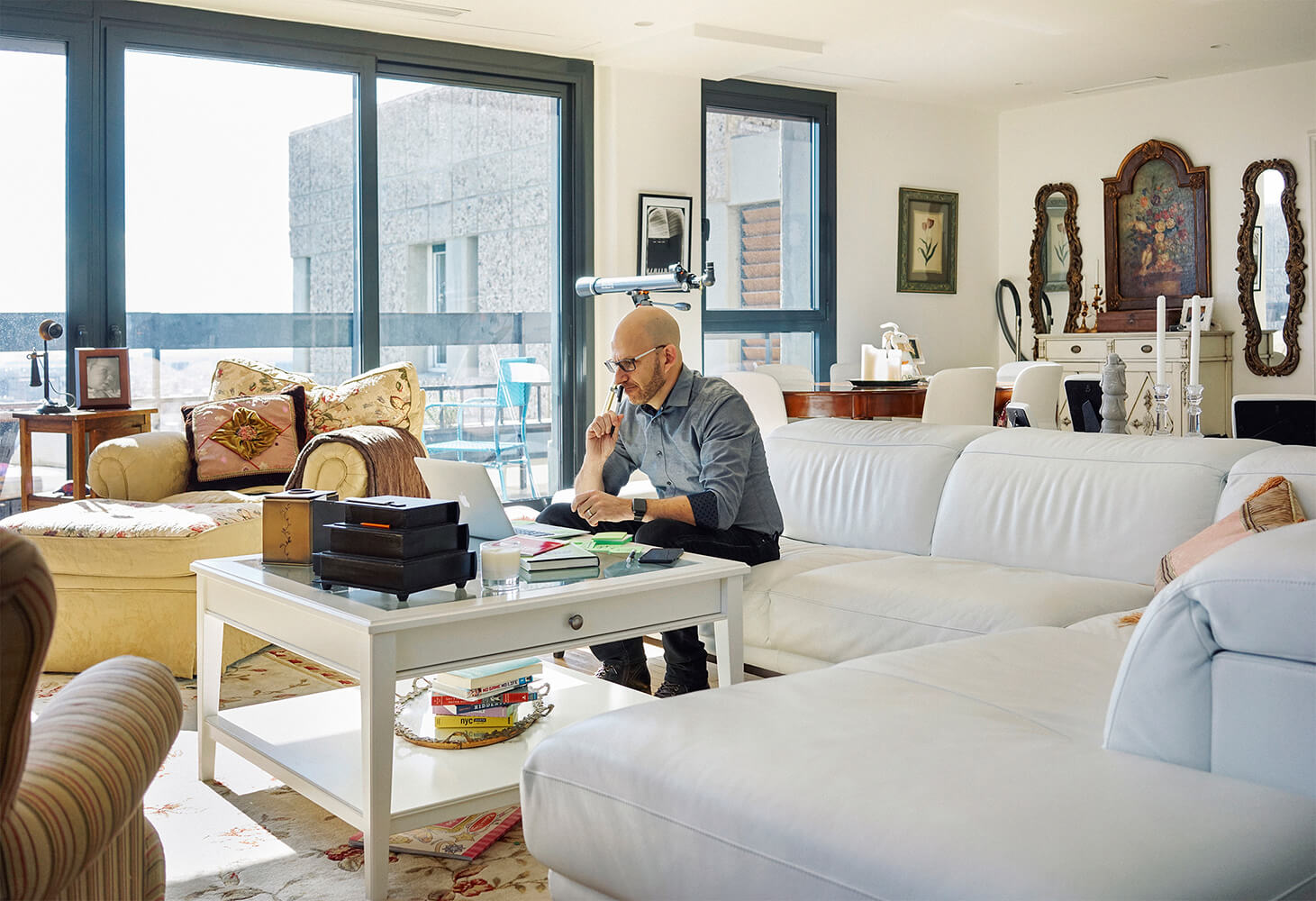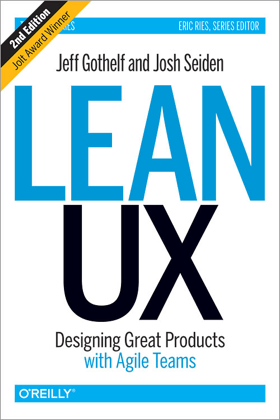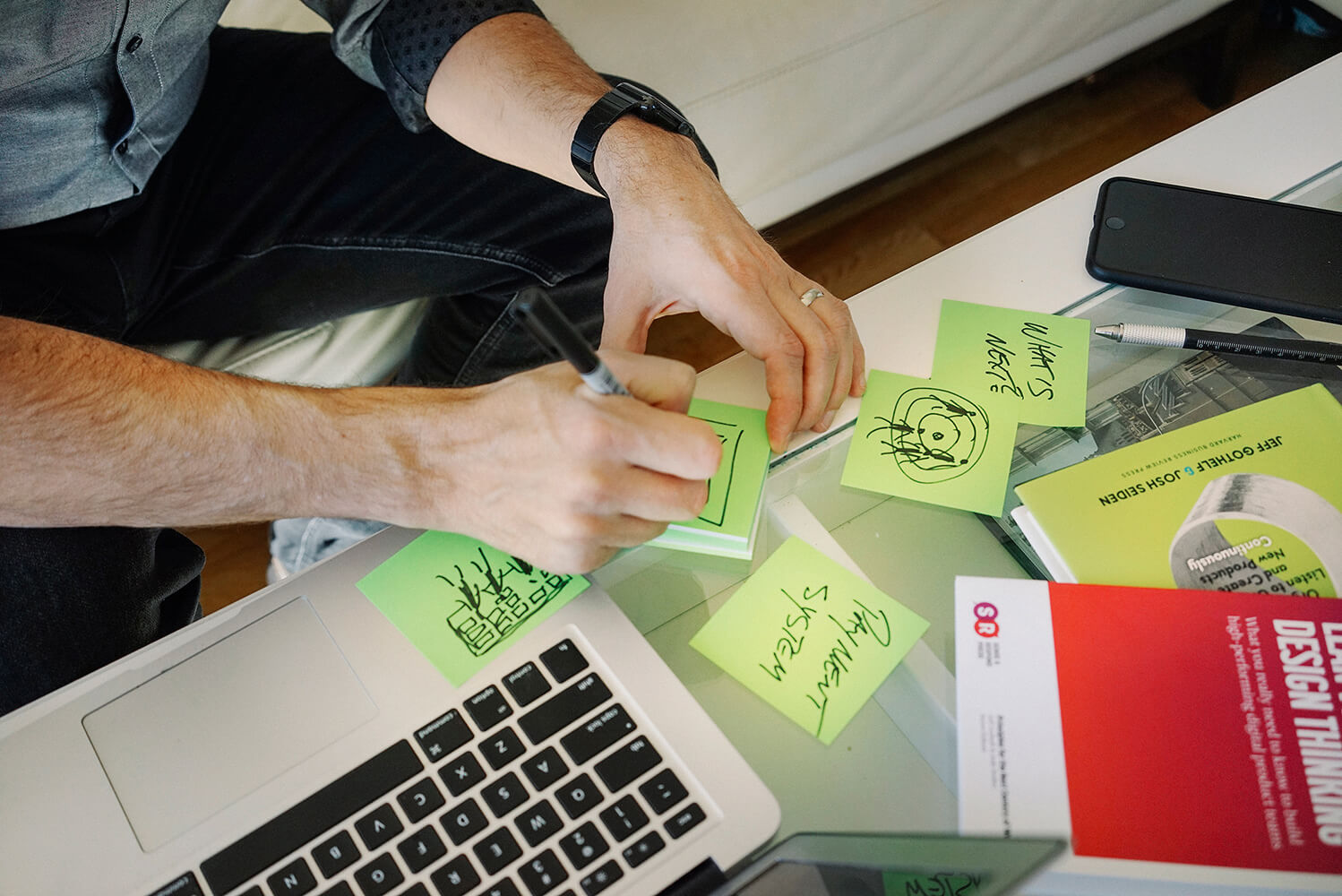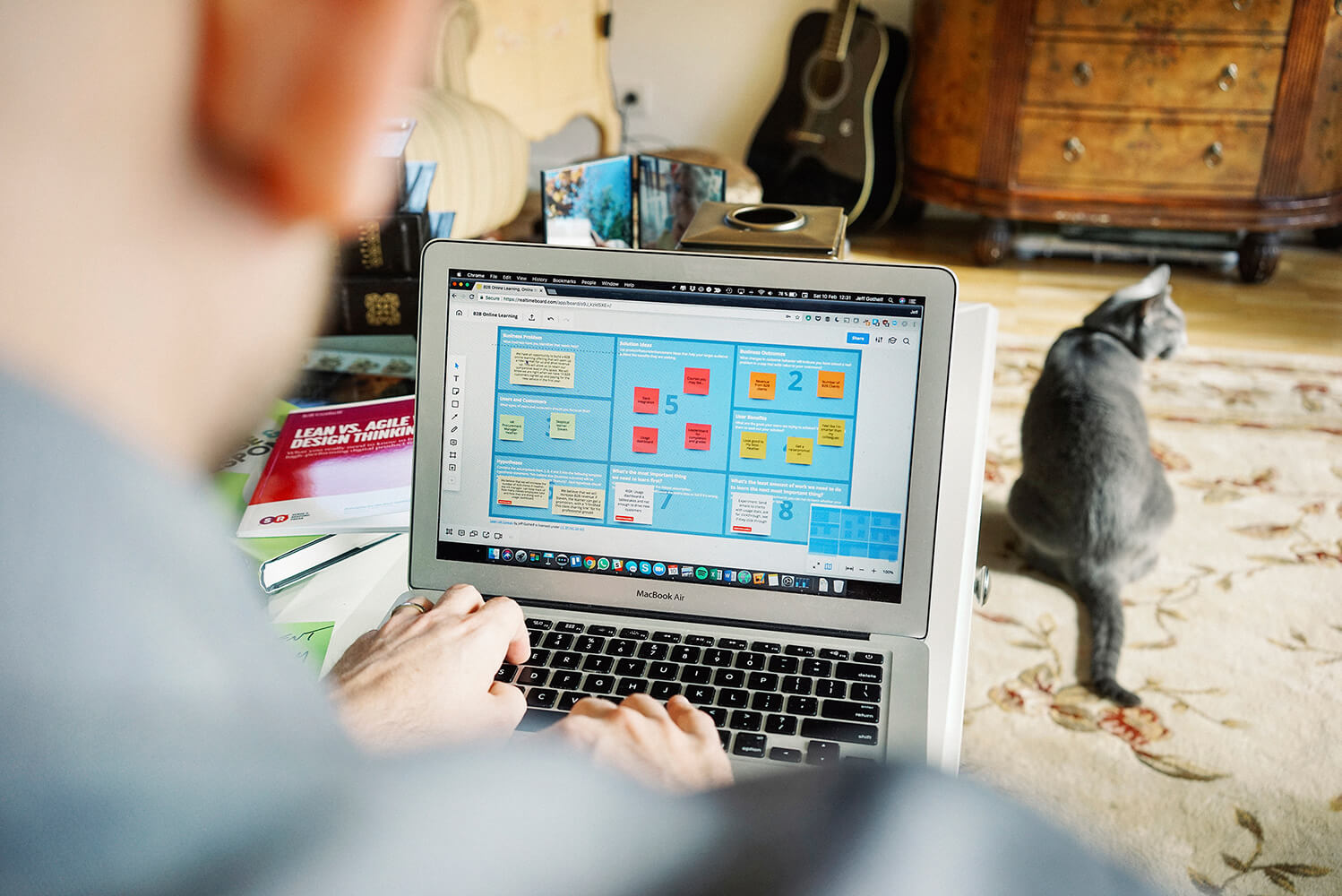At Miro, we talk to designers, consultants and product people who are leading the industry in order to understand the future of experience design, product development and remote work. We’re really pleased to start this series of interviews with thought leaders in this space. Recently, we talked to Jeff Gothelf, a consultant, UX designer and best-selling author, about the main challenges big companies face on their road to digital transformation.
As a consultant, do you see any recurring challenges that companies are dealing with?
I could probably distill all of the challenges that my clients face into a set of high-level categories. Over the years, I haven’t seen those categories shift too much, but I expect that they will. They have to or we’re not moving forward.
One big challenge I see is that many large organizations are struggling to shift their mindset away from an industrial-era manufacturing model. It’s very difficult for many companies to understand that manufacturing as much software as possible doesn’t necessarily equal success. Until they accept that concept, they will struggle to be Agile. They think about making software, not optimizing a software system that encompasses everything: planning and budgeting, reward structures, incentives, what teams work on, how they work. All these things are affected by whether they are working collaboratively to optimize the system or whether they’re working to optimize the production of software. The former is how modern companies work. The latter is a relic of the past.
The goal is to learn as quickly as possible. Many organizations don’t value learning; that’s another challenge I see. Lastly, many organizations don’t really take a customer-centric approach to the way they are working. They think about their own short-term gains as opposed to optimizing for a great customer experience, which will ultimately yield positive long-term gains.
Profile
Jeff Gothelf
is the co-author of Lean UX and Sense & Respond, as well as a speaker, consultant, and organizational designer. He also founded Sense & Respond Press, a publishing company that produces short, beautiful, actionable books by leading practitioners in the field of innovation, digital transformation, product management, and design For more updates, you can follow him on Twitter or Medium.
Many organizations don’t value learning
What made you decide that your recent book, Sense & Respond, is relevant and important for the industry?
People were reading our first book Lean UX, and saying, “I want to work this way, but my company won’t let me do it.” So Josh Seiden and I decided to write a book called Sense & Respond to explain to managers and emerging leaders that they’ve got to rethink how they are running their companies and how they can build cultures of learning, customer success, collaboration and agility.
What have you discovered after publishing Lean UX? Can you remember a couple of interesting use cases that you saw and that you didn’t expect when you were writing the book?
The feedback over the years has been tremendously positive. People have even started to write “Lean UX designer” in their job titles. I think, when we wrote the book, we were successfully responding to the Agile and UX challenge. The most surprising thing for me is how big a movement it has become. It has become a global conversation, and it’s been something that I’ve been lucky enough to be a part of for a long time.
As for the use cases, there was one from an agency in Copenhagen called Hello Group. They were doing a lot of really interesting, forward-thinking Lean UX practices which are difficult to do in an agency setting. You have to sell it to your clients, and they have to want to work with and pay you in a different way. I think it was really nicely done, and their creativity in figuring out how to solve these challenges was very inspiring.
The other use case that I really like is from CarMax, a used cars sales company in the US. They do not sell cars on their websites; they connect people with cars that are in their stores, so there’s a great conversation between the physical store staff and the digital teams. They’re truly doing good multichannel service design.
Tools that Jeff regularly uses
1 Keynote
2 Trello
3 Zoom
4 Slack
5 Google Docs
6 Miro



Which big trends and challenges do you see in your industry?
I think what has become interesting is the rise of product management and the ways that UX designers must differentiate themselves from the work that product managers do. I see a lot of tension between product managers and UX designers. I see a lot of organizations investing heavily in design and research but not giving those people the authority to do their work, which I think is really frustrating.
Another challenge is when the leadership defines success as the production of software rather than customer success. They buy into Agile, Lean, and design thinking, but they don’t understand that it impacts the entire organization and changes the way the whole company works, not just the product development teams. There’s an expectation of newfound success, innovation and productivity if we only change the way these three disciplines work. But you have to involve everybody – HR, finance, risk, compliance, legal and marketing – and make sure that they’re also participating in this new way of working.

Lean UX: Designing Great Products with Agile Teams
You should have a clear reason for your Agile transformation
I also see that many project management professionals are coming from the Waterfall mindset. I think that’s a big challenge; it’s a mentality that the way we work has to change. If you’re working in software, you’re dealing with a certain level of ambiguity and uncertainty. You can’t predict the net result or the end state of these initiatives, and to pretend that you can is risky. It’s a risk for your project and should be mitigated. Product managers are trying to figure out how to incorporate themselves in such a way that they’re enabling the team to move forward quickly in the right direction without getting blocked in extensive upfront planning, and trying to predict exactly how the product will work and perform at that time. To me, that is the biggest challenge of working with traditional project managers.
Do you have any methodologies to overcome this Waterfall mindset?
In our training, we try to make people aware that Waterfall ways of working don’t apply in a digital world. The most effective methodology is to show people projects that didn’t work in the past and what could have been done differently to make them more successful. We review their previous projects if we can do it respectfully.
The most effective way to overcome the Waterfall mindset is to get them to give you the opportunity to work differently and show them how that work changes the way the teams are performing and what they do. If you’ve got people who are willing to try something new, that’s helpful. Telling stories and showing videos works as well.
How can we measure success and understand the real impact of Agile methodologies?
You have to measure and manage the work to outcomes — measures of human behavior. You’re measuring how your customers’ behavior is changing and what makes them successful. How are your employees behaving? Are they improving? Are they doing better work? Are they sticking around longer? Are they quitting? These are all things that you can measure to help determine whether an Agile methodology is working.
You should have a clear reason for your Agile transformation. You should set those success criteria upfront, so people know why they’re doing it, how they will measure success and how they’re tracking towards that success.

customer stories
How Twill Logistics is transforming freight forwarding


How does the changing nature of work – for example, working remotely – affect you and the way you are planning your coaching sessions or the way you help organizations?
Although there will inevitably be an increase in the number of remote workers, the best work gets done through face-to-face collaboration, when people are in the same room together on a regular basis. Tools for remote collaboration exist, but nothing beats standing at the whiteboard with your colleagues, sketching out an idea, erasing it, sketching some more, writing on Post-Its, making changes and talking about it. I try to be present whenever possible.
People will increasingly be working remotely because people like working from home; it’s cheaper and it reduces the load on transportation networks, emissions and the environment. It’s also cheaper for employers – less office space, less overhead, less parking. People want more flexibility in their jobs, and they have new attitudes about when and where they’re working. Why do I need to be in the office if all I’m doing is writing code today? Although I think remote work is contradictory to good collaborative behavior, you don’t have to collaborate every day. If you know that you need a couple of days to design or code, you can stay home.
Do you think the rise in remote workers is somehow connected with the talent market? It’s important to find the best professionals.
Salary is coming into play, which is interesting. If you want to hire the best person and your candidate happens to be in San Francisco, you’ll have to pay them San Francisco rates. Basecamp recently announced that they’re paying all of their employees San Francisco salaries. I think this is the only way to do it. If I’m the best at what I do, you need to pay me what I’m worth in the city where I live. You’ve got a global hiring field, and perhaps you can find cheaper talent from other parts of the world, but if you’re looking for the best, you’ve got to figure out how you’re going to pay.

Customer stories
How does Upwork avoid the pitfalls commonly associated with distributed work
My advice would be, “Don’t rush it”
What advice would you give to aspiring UX designers?
My advice would be, “Don’t rush it.” I think too many people are focusing on getting a promotion before they have actually earned it. Instead, what they need to do is find a good place to work, find a good mentor and don’t try to get to a senior level too quickly. You should learn the craft and learn how to be a good consultant to your stakeholders, internal and external. Learn how to work with engineers, communicate effectively and build support for your work. You’ll get promoted as a result.
As for education, I think finding a mentor is the best way to learn. If there’s something you don’t know and you have the opportunity to learn it, you could ask your boss to buy you a class. I think you should definitely be attending meetups and conferences to understand new ideas and see what you want to focus on and what you want to talk about next. Ideally your best learning comes on the job and from a mentor.
For me, having a community is also critical because I’m a solo practitioner. If it wasn’t for the community of professionals that I’m a part of, I’d be working by myself all the time. If you’re in the office every day and you’ve got people you can talk to there, perhaps it’s slightly less critical. But understanding the broader community’s concerns and what they’re working on is really important. Every city has a UX meetup. Slack is a good option for networking, and there are still email groups. Twitter is really good, and LinkedIn can also be a good place to connect with the UX community.





